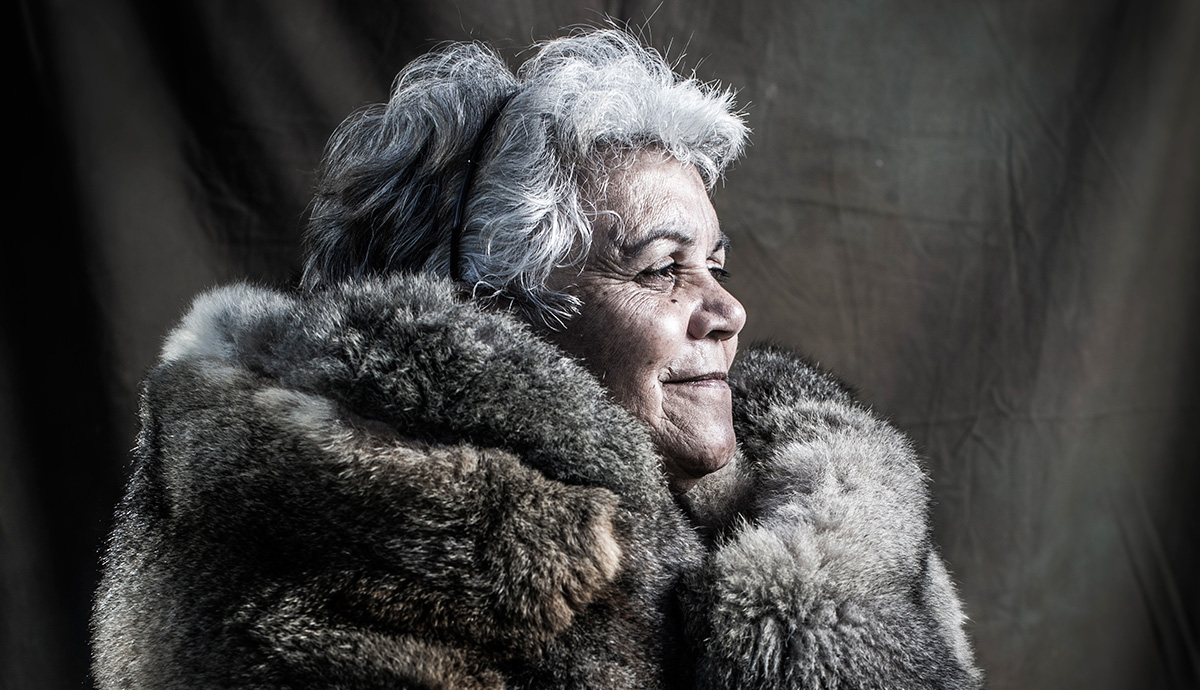May 28, 2015
Ancient traditions find pride of place in Batemans Bay
The local Indigenous community and UOW are reviving an ancient tradition lost for more than a century.
The local Walbunja and Yuin people, from the New South Wales South Coast, are weaving together their stories and cultural knowledge in the form of a traditional possum skin cloak, with assistance from UOW’s Batemans Bay Campus and a community engagement grant.
Possum skin cloaks are sacred to Aboriginal people in south-eastern Australia. Photographs from the 19th century often show Indigenous people wearing cloaks. By the mid-20th century only a handful of cloaks were in existence.
In addition to being warm and comfortable, the cloak connects the people with the land and their stories and bestows a sense of pride and dignity on the wearer.
UOW education tutor, artist and Walbunja Elder Aunty Loretta Parsley is guiding a series of community workshops to make the cloak and decorate it with local Indigenous stories and symbols.
The workshops also include storytelling and videoing of stories to record the cultural history.
Fellow Walbunja and Yuin people are the custodians of the cloak and they have been chosen to be part of the project because of their strong links to the land and close to nine generations of recorded history in the area.
She said the Batemans Bay Campus was a fitting location for making the cloak because it was close to the ancient learning and birthing site at Hanging Rock.
“The cloak itself was more than just warmth, it was a spiritual item,” she said. “It was tradition for families to sew a cloak and decorate it with their symbols and totems. It was used for healing and giving warmth for sick people, used in the birthing process and at times people were buried in them.
“The tradition was lost more than one hundred years ago and by the 1930s the government started issuing blankets and there was no need for cloaks for warmth. Once they stopped the hunting the possums the old traditions died.
“Reviving the cloak at this site is in a way representative of the re-birthing of this ancient tradition. Through the workshops we’re building up cultural knowledge that will be transferred to the cloak by the custodians.”
Forty possum pelts were imported from New Zealand, where they are considered an invasive pest.
When complete, the cloak will be displayed at the Batemans Bay Campus and teaching kits will be developed for use as a resource to educate local students about Indigenous history and culture.
“We’ve taken thousands of years of Indigenous learning and put it into written practice,” Aunty Loretta said.
Aunty Loretta said the project drew the community together at the University, created opportunities to share stories and histories and acknowledged cultural expertise and local history.
“The University has opened the door for Aboriginal people to lead the way. We’ve always been welcomed here so the University becomes part of the context of the site through the cloak.”
A cloak-making workshop was held as UOW celebrated 40 years of independence and the Batemans Bay Campus celebrated 15 successful years.
“We started with 30 students and have had 500 students graduate,” UOW Batemans Bay campus manager Gayl Vidgen told the Batemans Bay Post.
“We had our first teachers graduate in 2009 and will have our first nurses at the end of 2016. We have two students that have PhDs and several who are working to achieve this goal at the moment.
“The University of Wollongong is contributing towards a healthier economy for the South Coast and improving lives by empowering people with knowledge and great jobs.”
